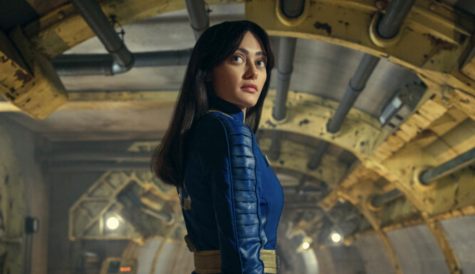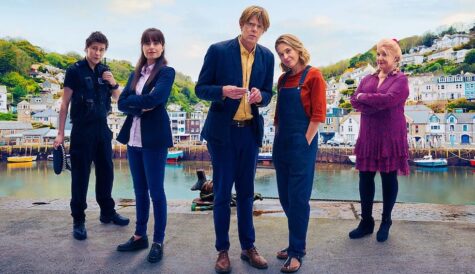The new vintage
The international kids TV market will soon be swamped by much-loved heritage brands that are set to relaunch. Jesse Whittock investigates whether looking to the past is the way to secure future TV hits
 Question: what do the years 1965, 1969, 1973, 1980, 1983 and 1997 have in common? Answer: they all represent years that now-classic children’s brands first launched on television.
Question: what do the years 1965, 1969, 1973, 1980, 1983 and 1997 have in common? Answer: they all represent years that now-classic children’s brands first launched on television.
In the past few years, rebooted shows such as Nickelodeon’s Peter Rabbit and Teenage Mutant Ninja Turtles performed well after relaunching. The fear among producers is that broadcasters are less likely to commission new ideas when offered the option of tried-and-tested alternatives — and around half a dozen heritage brands are soon coming back to TV in new guises.
However, the situation is more complex and each kids show, new or reboot, has its own origin story, says Genevieve Dexter, founder of kids consultancy Serious Lunch and executive producer of UK terrestrial Channel 5’s upcoming Wombles remake. “When you look at the finance models of the shows coming back, they are all completely different,” she says.
Michael Dee, director of content at UK-based IP group Coolabi, agrees. “It is very strange, and I don’t know what’s in the ether, but these things take a long time to pull together. They emerge in different ways and they all have their own lives,” he says.
 The re-emergence of Oliver Postgate’s other-worldly 1960s UK preschool series Clangers (above) is down to the programming team at US kids cable channel Sprout. “The broadcaster saw we had merchandising rights to The Clangers, and asked us whether we could bring it back, and whether the Postgate family would be happy with that,” recalls Coolabi’s director of production development Zoe Bamsey (nee Scurfield).
The re-emergence of Oliver Postgate’s other-worldly 1960s UK preschool series Clangers (above) is down to the programming team at US kids cable channel Sprout. “The broadcaster saw we had merchandising rights to The Clangers, and asked us whether we could bring it back, and whether the Postgate family would be happy with that,” recalls Coolabi’s director of production development Zoe Bamsey (nee Scurfield).
Meanwhile, “the nostalgia around Danger Mouse was coincidental” to FremantleMedia Kids & Family Entertainment bringing the classic British animated spy back to TV, says the RTL-owned content company’s executive VP and general manager Rick Glankler. “We brought back the brand was because the story is timeless, and because Danger Mouse was one of the leading British brands in the eighties that travelled the world. There was global appeal.”
The return of a perennial favourite often offers one clear advantage over a new brand: a well-developed ancillary business. In the US, Cartoon Network is in 2016 relaunching The Powerpuff Girls, which it claims has generated US$2.5 billion in retail sales since launch in 1998.
In Canada, Teletoon has tasked DHX Media with creating a new version of Inspector Gadget. DHX’s senior VP, distribution Josh Scherba says Inspector Gadget already has lined up a “significant” group of broadcast partners, highlighting the continued impact of a show that first hit screens in 1983.
“We’ve got a generation of people who grew up on it that are going to want their kids to experience it too,” he says. “Gadget is such a classic character – we’re keeping the physical comedy very much alive as that remains very relevant for audiences in 2015.”
For Dan Gopal, whose employer ITV Studios Global Entertainment is planning a major screening of the rebooted supermarionation kids series Thunderbirds Are Go! (pictured, top) at MIPJunior, brand awareness helped score a presale for the new show with Australia’s Nine Network.
“Many of our clients are aware of the classic 1960s series and some have a history of licensing and exploiting that version. Equally, we are also talking to partners with no history of the original. They still understand how we have embraced the heritage and positive attributes of the classic series while creating a very modern version,” he says.
But how do you stay true to a brand’s values in a world that rarely resembles that of even even a few years ago – let along two or three decades? It’s an issue Mike Young, creator of 1980s superhero toon SuperTed and now founder of Splash Entertainment, is mindful of as he works up a new 26x30mins version of his show. He is aware that tastes and sensibilities have changed.
“The original was made in an era when anything went and I don’t want to lose that,” he says. “Political correctness and awareness are to the fore now, but we want to retain the spirit of the original. I’ll be damned if I do it any other way.” Young has a bible ready for potential partners at MIPJunior.
Keeping the uniqueness of a brand is absolutely key, says FremantleMedia’s Glankler, referencing how the spy-thriller spoof elements and unique relationships in Danger Mouse are timeless facets of the show. The new show will have Danger Mouse wearing an ‘i-patch’, which Glankler considers a nod to the present and the past. “Spy technology is always going to be exciting and appealing for kids,” he adds.
Similarly, Coolabi’s Dee says “there are certain things in Clangers that are perennial and don’t change”, such as the themes of community spirit and promotion of recycling. These “have never been more relevant than today”, he adds.
Patrick Elmendorff, managing director of Belgium-based Studio 100 Media, references recent improvements in CGI production technology as another driving force behind the trend for revisiting heritage brands.
“Technological advances make it worthwhile,” he says. “Even five or six years ago there were fewer possibilities, but now you can recreate and bring back some of these classical brands.”
 Studio 100 is currently working on remakes of classic Swedish morality tale The Wonderful Adventures of Nils and Heidi (above), which Studio 100 Animation is recreating for French broadcaster TF1, Germany’s ZDF and Nine Network in Australia. “We’ve tried to create the same look and feel as the original Heidi – the characters look very similar,” says Elmendorff.
Studio 100 is currently working on remakes of classic Swedish morality tale The Wonderful Adventures of Nils and Heidi (above), which Studio 100 Animation is recreating for French broadcaster TF1, Germany’s ZDF and Nine Network in Australia. “We’ve tried to create the same look and feel as the original Heidi – the characters look very similar,” says Elmendorff.
ITVSGE’s senior VP, digital global media Gopal says he expects Thunderbirds are Go! to resonate with new audiences because of “the balance achieved between creating a series with the core characteristics of the original show at its heart, while embracing current technology and production techniques to give it an incredibly modern look and feel”.
DHX decided to call on the services of a UK company – Darrall MacQueen – to produce an updated version of preschool megahit Teletubbies, having acquired the rights from creator Ragdoll Productions in 2013. “Britain was where the series was founded, and we didn’t think there was any substitute for being that close to the original DNA,” says Scherba.
Elmendorff suggests evergreen stories can increase viewership with “the three-generation phenomenon” of parents and grandparents watching with the little ones.
Consumption patterns have changed significantly in the multimedia era, and this represents another challenge for producers looking to remain true to their classic brand. While Studio 100 is keeping Heidi at its original 22-minute episode length, others such as Maya the Bee have been reduced to 11.
DHX made a similar choice with Inspector Gadget. “One of the big things was go with an 11-minute format, rather than the 22-minute that was the norm in 1983,” says Scherba. “That definitely brings it up to date.”
Kids TV is, of course, much more of a business than it was when Clangers arrived on the BBC in 1963, or the Wombles first set foot on Wimbledon Common a decade later. Animated children’s programmes rarely survive if they do not lead to successful consumers products businesses.
“These series were made at a time when CP was a vague concept,” says Serious Lunch’s Dexter. “If you liked The Clangers, you couldn’t go out and buy a Clangers cup, as strange as that may seem now.”
 Dexter notes that while international networks had success with shows like The Wombles (pictured) and Danger Mouse first time around, others such as Clangers were very much local brands.
Dexter notes that while international networks had success with shows like The Wombles (pictured) and Danger Mouse first time around, others such as Clangers were very much local brands.
Dee and Bamsey say Clangers was not considered as a BBC heritage show internally at the UK pubcaster, but this did not stop BBC Worldwide taking on international sales rights. “It’s been totally embraced as a new show,” says Bamsey.
“Internationally, we have to think about it as a brand new preschool show,” adds Dee. This will also mean working up a CP strategy from scratch, but the weird and wonderful characters and their quirky actions mean “it is really unique from a consumer products angle”.
FremantleMedia’s Glankler warns reputation alone is not enough: “Rebuilding classic brands might help break through to a few retailers or manufacturers, and there might be some consumers that are move aware of it, but that’s as far as it goes.”
But before international sales and licensing and merchandising strategies can be drawn up, there is often the thorny issue of where the rights actually lie with these brands.
Mike Young took a year to bring all the SuperTed rights back under one roof, while Wombles co-creator Mike Batt spent even longer regrouping the Wombles IP, which had been sold in parts over a number of years.
Batt is now seeking long-term equity partners for the brand and reveals he has turned down one offer of £10 million (US$16 million) from a UK-based kids company acting on behalf of a larger private investor.
“We are setting up our own animation facility with the help of the UK’s best production and technical talent, and look forward to sharing the adventure with the right commercial partners who can bring energy, vision and financial muscle to assist the ambitious international roll-out of the property,” he says.
Rights to other shows such as Danger Mouse and Thunderbirds were already housed in one place with major TV distributors, while some older IP is now out of copyright.
What is true of all of the reboots is the ultimate rights owners believe these shows – the biggest and most-enduring of their eras – will be modern days smashes.
But where does this leave new development, and what do the heritage brands says about broadcasters’ willingness to take risks?
“I believe we see a relatively restrictive policy from broadcasters in regards to investing in and coproducing new content,” says Studio 100’s Elmendorff. “Heritage makes things easier – establishing a new brand is much more difficult than one everyone is already aware of. There has been a certain tendency towards [heritage properties].”
The networks are less certain. “In the past two years there have definitely been more reboots than in the past and I don’t know why; it could be commercial, or it could be editorial,” says Nickelodeon’s senior VP, global acquisitions and international programming Jules Borkent, whose network has relaunched Teenage Mutant Ninja Turtles and Peter Rabbit.
“It could be seen as being risk-averse, but the challenge is still that the audience will decide. If something was big in the 1990s [kids today] don’t have a point of reference.”
Elmendorff says having a mix of library and original development is key, something with which DHX’s Scherba agrees. “New content is the lifeblood of this business, and while we have a great library, it’s critical to be consistently developing new content.”
Serious Lunch’s Dexter says success for the heritage brands will help to develop the industry and create more money for development: “If we make some money out The Wombles, you can bet we’ll try to make the next big kids brand, but the money has to be there for it to happen in the first place.”
FremantleMedia’s Glankler reference’s Entertainment One-sold Peppa Pig and Cartoon Network pair Adventure Time and The Amazing World of Gumball as sign new properties can break through.
Whether today’s young audiences take to yesterday’s classics remains to be seen. The ones that work will successfully harness a mix of pop culture, ratings and CP revenues.
Coolabi’s Dee says: “All of the new heritage shows have different merits and are from different eras, so it’s really hard to box them into the same bracket.”



